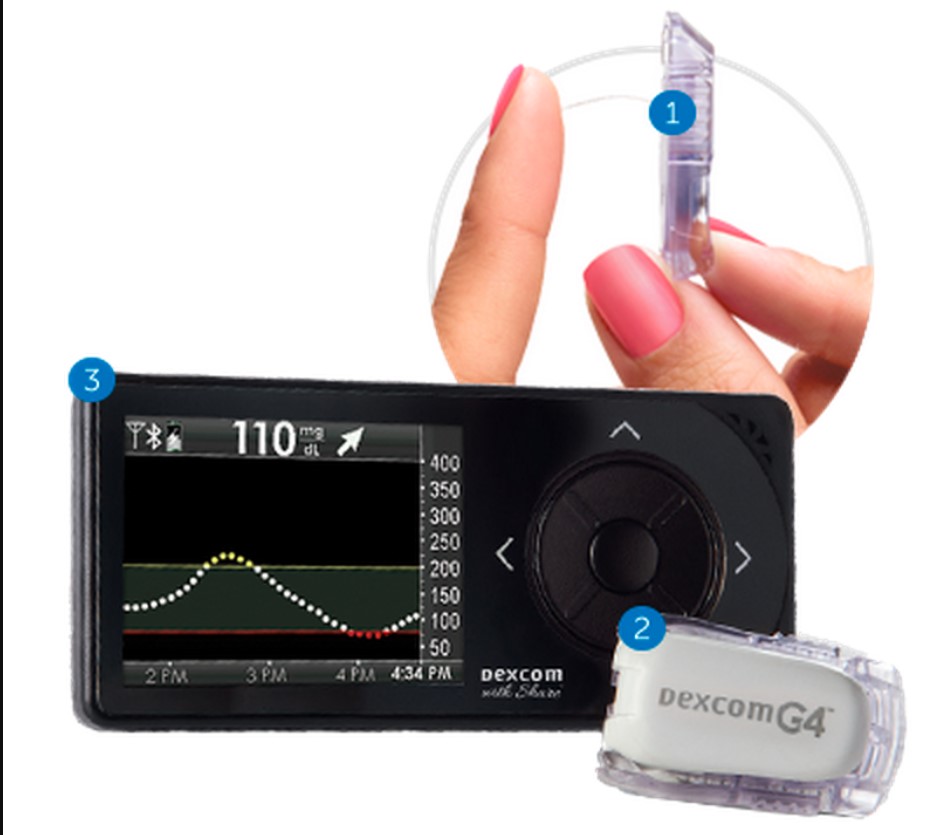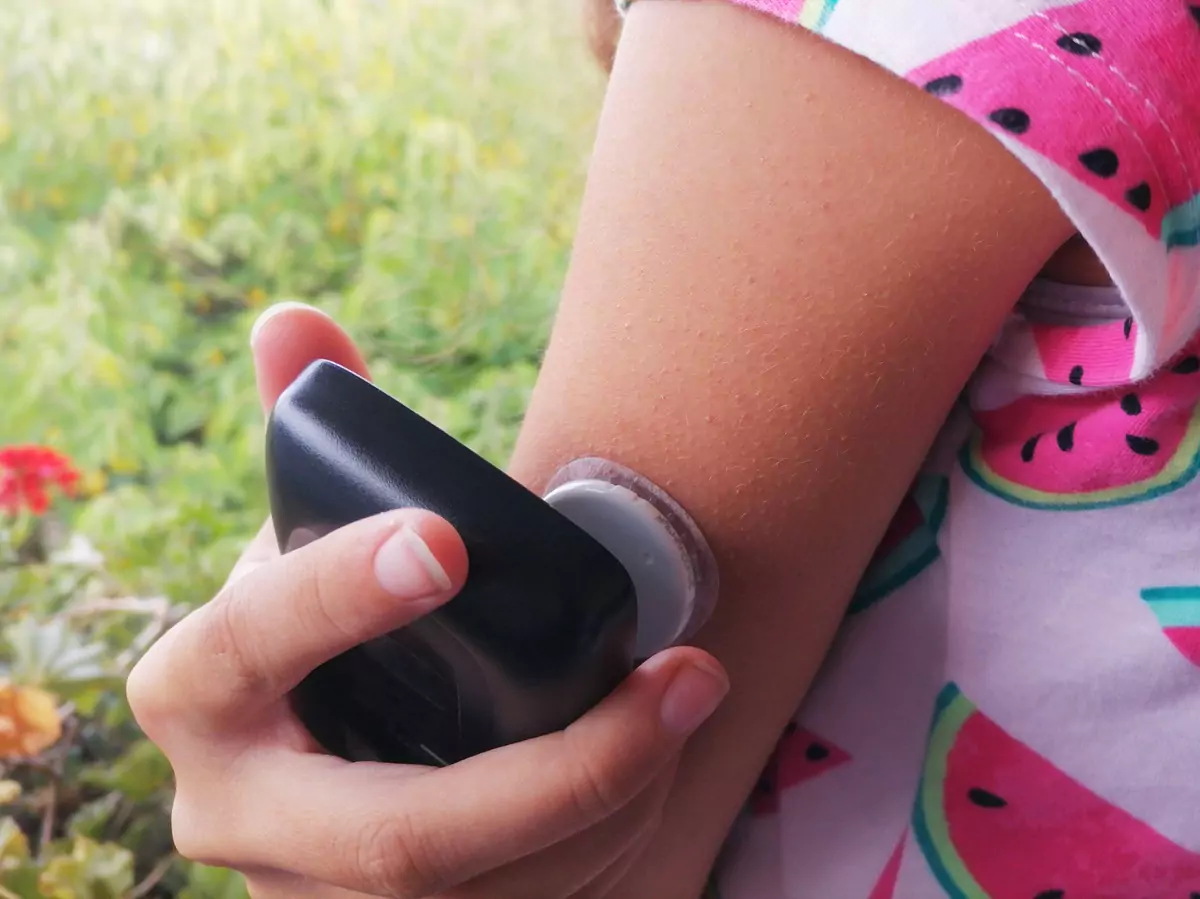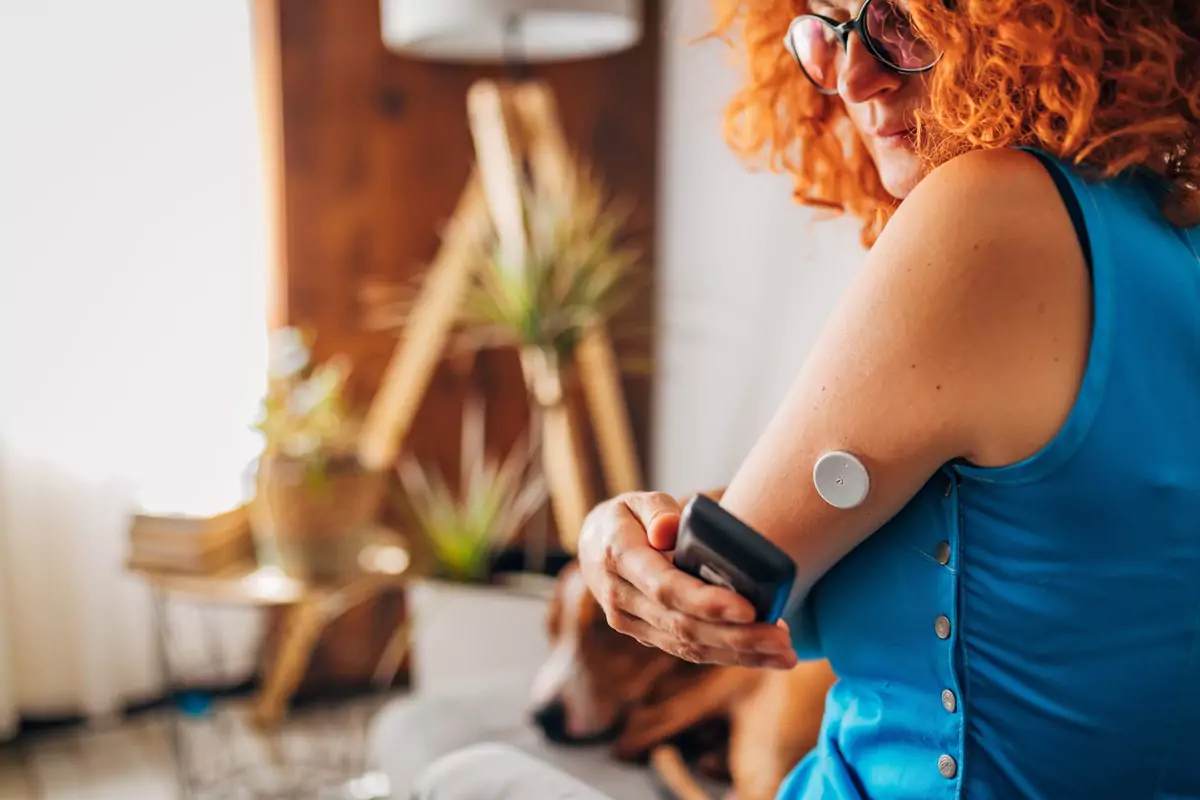





Is Dexcom Better Than Finger Sticks? A Comprehensive Comparison


Table of Contents
- Understanding Dexcom Glucose Monitoring Systems
- Understanding Finger Stick Glucose Monitoring
- Accuracy Comparison: Dexcom vs Finger Sticks
- Convenience Comparison: Dexcom vs Finger Sticks
- SugarMD Advance Glucose Support
- Cost Comparison: Dexcom vs Finger Sticks
- User Experience Comparison: Dexcom vs Finger Sticks
- The Verdict: Is Dexcom Better Than Finger Sticks?
- About The Author
In the vast, complex world of diabetes management, an important factor is the accurate monitoring of blood glucose levels. Every patient with diabetes knows the importance of keeping a vigilant eye on their sugar levels to prevent complications and manage their condition effectively.
As medical technology advances, a myriad of methods have appeared on the horizon, aiming to make this crucial task easier and more precise.
Two such methods have surged to the forefront, each with its own dedicated following: the traditional finger stick method and the innovative Dexcom glucose monitoring system. But a burning question persists: Is Dexcom Better than Finger Sticks? In this article, we are comparing these two methods in light of accuracy, convenience, cost, and user experience.
Understanding Dexcom Glucose Monitoring Systems
As we delve deeper, it becomes vital to understand the Dexcom Glucose Monitoring Systems, a spearhead in the realm of continuous glucose monitoring (CGM). Dexcom, with its unparalleled commitment to innovation, offers a transformative approach to diabetes management.
Their latest marvel, the Dexcom G7, stands as a testament to their inventive spirit, providing real-time glucose readings every five minutes, functioning as a sentinel for users, alerting them to potential high or low levels. This ground-breaking system promises to effectively eliminate the need for routine finger sticks, the customary invasive method for monitoring glucose.
It offers an avenue that's less intrusive and more streamlined, thus shaking up the traditional ways of diabetes management. A traditional glucose monitoring method is the finger stick method, a process that requires the user to prick their finger with a small needle, known as a lancet, to obtain a blood sample that is then read by a glucose meter. Despite being somewhat uncomfortable, it's a method deeply entrenched in diabetes management due to its direct approach and immediate results.
However, it only provides a snapshot of the glucose levels at the time of the test, not a continuous trend. In contrast, Dexcom's approach with the G7 model uses a tiny sensor inserted under the skin to monitor glucose levels continuously throughout the day and night. It paints a comprehensive picture of the user's blood sugar trends, a feature notably absent in the finger stick method.
The G7 system also offers an alarm feature, sounding a warning when glucose levels rise or fall too drastically, which can potentially save users from dangerous health situations. Convenience, in the context of diabetes management, is a multifaceted concept. It involves the ease of the method, the frequency of testing, and the discomfort or pain associated with the procedure.
The traditional finger stick method, while reliable, requires multiple pricks throughout the day, which can be uncomfortable and inconvenient for many users. The Dexcom G7, on the other hand, entails a one-time insertion of a sensor that stays in place for days, providing constant monitoring without the need for repeated invasive actions.
Understanding Finger Stick Glucose Monitoring
The traditional method of finger stick glucose monitoring. Imagine this: a quick, though somewhat painful, prick of the finger, a tiny droplet of blood, and then – the blood sample gets put to work, tested using a glucose meter.
It's a method that has stood the test of time and, for the most part, it works. The effectiveness of this method lies in the detail: it delivers accurate readings, giving those with diabetes the ability to manage their blood sugar levels with confidence.
However, it's not all rosy. The prick of the needle can be somewhat unpleasant, especially if it's repeated multiple times a day. It's a classic case of the scales of convenience and necessity balancing each other out. Imagine someone needing to test their glucose levels repeatedly throughout the day - that's a multitude of tiny pricks causing discomfort.
Accuracy Comparison: Dexcom vs Finger Sticks
Accuracy is a pivotal factor in this conversation, and both Dexcom and finger sticks stand tall with their respective merits, each boasting impressive statistics and practical benefits. With Dexcom's CGM system, one can ace at an impressive Mean Absolute Relative Difference (MARD) of just 9%. Picture that – the device is perpetually tracking glucose levels, and it's doing it with high precision.
It's not a question of reliability, it's a testament to it. However, let's not get carried away and discard the time-tested, faithful finger stick method just yet. Finger sticks also hold their own with a varying MARD range of 5.6-20%.
It's a wider range, yes, but keep in mind that it's still a range within the realm of dependable accuracy. This range is influenced by various factors: everything from the user's technique to the quality of the test strips to even the specific meter model being used.
Drawing a parallel between Dexcom and finger sticks isn't as straightforward as comparing apples to apples. They are two different methods with their unique set of strengths and weaknesses. Dexcom shines with its continuous monitoring capability, bringing ease of use and convenience to the table. Conversely, finger sticks deliver accuracy in a compact package, a trusty method even if it's a tad more hands-on.
Convenience Comparison: Dexcom vs Finger Sticks
For many, this struggle seems to oscillate between two primary methods of glucose monitoring: the use of Dexcom, a continuous glucose monitor, and traditional finger sticks. Firstly, let's explore the innovative landscape that Dexcom provides. This particular device is the embodiment of convenience, cutting through the clutter of daily health management with enviable ease.
As the name suggests, continuous glucose monitoring (CGM) is at the heart of its operation, setting it apart from traditional methods. What's the implication of this constant monitoring? The benefits are manifold. Dexcom, with its relentless watch, facilitates users to keep a watchful eye on their glucose levels round-the-clock. It guides in a newfound sense of ease and control.
Picture this: A day in the life of a Dexcom user doesn't involve routine interruptions for glucose checks. The need to puncture the skin, a discomfort that comes with conventional methods, becomes a thing of the past. This round-the-clock monitoring is akin to having a personal health assistant, one that diligently tracks glucose without constant human intervention.
Moreover, it's not just the hassle of pricking that Dexcom alleviates. The continuous monitoring also paves the way for trend identification. Users can perceive patterns in their glucose levels, aiding them in making lifestyle adjustments. So, the Dexcom device empowers individuals with diabetes to live with an added layer of insight and proactivity.
Turning our attention to the traditional method, finger sticks, we're faced with a starkly different scenario. There's no denying the reliability of this glucose monitoring method. Its accuracy has stood the test of time, serving as a vital lifeline for those managing diabetes. Yet, when one scrutinizes the convenience factor, finger sticks seem to fall short. Unlike Dexcom, finger sticks necessitate constant attention.
The process involves regular blood sampling, a routine that can grow monotonous and intrusive. Each day is punctuated by numerous instances of pricking.
The rhythmic flow of life is intermittently disrupted, replaced by the recurrent task of monitoring one's glucose. Also, it's essential to mention that the act of pricking isn't just a physical inconvenience; it also carries emotional weight.
The constant reminder of one's condition can be a source of stress, a psychological factor that should not be underestimated. Although finger sticks offer accurate readings, they do so at the cost of comfort and peace of mind. A direct comparison of these methods brings into focus the convenience champion: Dexcom. Its unintrusive design, coupled with its relentless glucose tracking, paints a picture of hassle-free diabetes management.
Conversely, finger sticks, while offering reliable readings, require frequent physical and mental engagement from users, disrupting their day-to-day life rhythm. To sum up, when it comes to convenience, Dexcom delivers. It allows users to keep track of their glucose levels without the intermittent disruptions and discomfort that comes with finger sticks.
It revolutionizes the diabetes management process, moving beyond traditional methods and adopting a future where constant health vigilance does not equate to constant human intervention.
SugarMD Advance Glucose Support
Maintaining healthy blood sugar levels can be a challenge. From carby meals to snacks and even with all the effort, it’s still not enough. That’s where SugarMD Advanced Glucose Support comes in. Our blend of traditional Ayurvedic herbs helps regulate blood sugar levels, curbs cravings, supports weight loss, boosts metabolism and energy. Endorsed by endocrinologists, this unique formula of pure, potent herbs promotes overall blood sugar health. Ideal for both pre-diabetics and Type 2 diabetics.
Cost Comparison: Dexcom vs Finger Sticks
Dexcom has developed CGM systems that stand at the frontier of glucose monitoring solutions. With a real-time glucose reading and round-the-clock tracking, Dexcom CGMs illuminate the ebbs and flows of glucose levels in the human body, promoting proactive diabetes management. However, the pursuit of advanced technology does not come without its own financial considerations.
Initial acquisition of a Dexcom CGM system involves a steeper cost compared to traditional glucose monitoring methods. This is a consequence of the sophisticated technology and intricate design of these devices, which embody years of research, development, and rigorous testing. The upfront price tag of a Dexcom CGM system may, understandably, make some individuals hesitate. Moreover, Dexcom CGMs involve additional recurring expenses.
Like the changing of seasons, the sensors on Dexcom's CGM systems demand periodic replacement. The necessity of purchasing these sensor replacements on a regular basis contributes to the overall lifetime cost of the device, marking it as an ongoing financial commitment. Yet, as we delve deeper into the economic aspect of glucose monitoring, we find that the traditional method of finger stick monitoring presents its own array of financial considerations.
At first glance, finger stick glucose monitoring systems seem like a pocket-friendly alternative. The initial Dexcom cost are often markedly lower than those of their CGM counterparts. However, when it comes to finger stick monitoring, the devil is in the details – or rather, in the test strips. Every blood glucose check using a finger stick system requires a new test strip, a reality that renders these strips a continually needed supply.
Over time, the cost of replenishing these consumable items starts to mount. In the long run, what seems like small change can accumulate into a significant expense, subtly increasing the lifetime cost of traditional finger stick monitoring systems. Therefore, while finger stick systems may have a more palatable initial cost, their affordability should be evaluated considering the perpetual need for test strips.
While on the other hand, despite the higher upfront cost, Dexcom CGM systems might be seen as a long-term investment in comprehensive and continuous health monitoring. To conclude, both Dexcom's CGM systems and traditional finger stick glucose monitoring systems come with their unique cost considerations.
The decision between these two methods thus becomes a balancing act of managing initial costs, ongoing expenses, and the level of monitoring detail required.
Individuals must gauge their financial capacity and health needs against these factors. It's important to remember that while the cost is a significant deciding element, it should not eclipse the paramount goal of effective and suitable glucose monitoring.
As such, the ultimate choice between Dexcom and finger stick systems should be a well-considered decision, taking into account both the monetary and health-related implications.
User Experience Comparison: Dexcom vs Finger Sticks
At one end of the spectrum, we have the Dexcom CGM system, which has ushered in a new era of diabetes management, intertwining innovative technology with proactive health care. The first point of discussion that often arises from users of Dexcom is the real-time monitoring feature.
This facet is a game-changer, giving users unprecedented access to a continuous stream of glucose readings, thereby allowing them to gauge their blood sugar levels throughout the day and night.
The advantage of this real-time data cannot be overstated. It adds another dimension to diabetes management, where the unexpected can often become the norm. The ability to track sugar levels continuously gives users a bird's eye view of their condition, enabling more precise adjustments to diet, medication, and lifestyle.
It's akin to having a personal diabetes advisor constantly on hand, offering a sense of control diabetes that was previously unheard of in managing this chronic condition. Furthermore, the Dexcom system is lauded for its comprehensive alert system. With alarms and notifications for critical glucose thresholds, the system ensures the user can respond promptly to avoid potentially dangerous situations.
This sophisticated alert system serves as a digital guardian, a sentinel ever ready to notify users of looming health threats, providing a peace of mind that is invaluable in managing a condition as volatile as diabetes. However, it's not all about the high-tech solutions.
On the other side of the debate, we have the humble finger stick method. While it might lack the advanced technology that the Dexcom system offers, it holds a distinct appeal to a considerable number of users.
To some, the finger stick method is more than just a tool; it's an old friend. It is straightforward, uncomplicated, and its results are immediate and tangible. A simplicity that contrasts with the more complex CGM systems. The finger stick is a relic of comfort in the fast-paced, technology-driven world. It's a method steeped in familiarity, offering a sense of security and comfort to many users who have been managing their diabetes this way for years.
The predictability of the finger stick method is a draw in itself. There are no alarms or constant data streams to contend with; just a simple prick, a drop of blood, and an instant glucose reading. While it might seem rudimentary compared to the likes of Dexcom, the uncomplicated, direct approach is what many users appreciate about this method.
Though it may seem that the Dexcom and finger stick method lie at opposite ends of the diabetes management spectrum, they share a common goal: to make managing diabetes more manageable. Whether it is the constant monitoring and alerts offered by Dexcom or the simplicity and familiarity of finger sticks, the choice ultimately depends on the individual user's needs and preferences.
In essence, the user experience with Dexcom and finger sticks is like comparing apples and oranges - both have their merits, their strengths, and their weaknesses. Both have their unique roles in the grand scheme of diabetes management, and both will continue to shape the future of how we deal with this chronic condition.
From the real-time monitoring and sophisticated alerts of Dexcom to the straightforward and familiar approach of finger sticks, these tools represent the range of options available to those managing diabetes, illustrating the diverse ways technology and tradition can support health management.
The Verdict: Is Dexcom Better Than Finger Sticks?
The question arises: "Is Dexcom better than traditional finger sticks?" This qestion is as layered as an onion, influenced by a multitude of variables and subject to the prism through which one views it. At the heart of this discourse lies the individual and their unique requirements, habits, and preferences.
Every person grappling with diabetes has a distinctive lived experience, shaping their approach to management strategies. In the final analysis, it's not a question of better or worse, but one of alignment.
Does the Dexcom system echo your health management philosophy, or does the tangible touch of finger sticks resonate with you more? The call isn't about superiority, but about what fits snugly into the puzzle that is your life. Choose wisely. Your choice will be the right one, for no one knows your journey better than you.
About The Author
Meet Dr. Ahmet Ergin a highly skilled and dedicated endocrinologist with a passion for diabetes care. Dr. Ergin earned his medical degree with honors from Marmara University in Istanbul. He completed internal medicine residency and endocrinology fellowship at Cleveland Clinic.
Dr. Ergin is board-certified in Internal Medicine, Endocrinology, Diabetes, and Metabolism due to his vast medical expertise. He's a certified diabetes educator, author of "The Ultimate Diabetes Book," and founder of "the SugarMD YouTube channel."
Dr. Ergin offers exceptional diabetes care to his patients in Port Saint Lucie, FL, helping them manage effectively. Disclaimer: These statements have not been evaluated by the Food and Drug Administration. Information on this website isn’t intended to treat, cure or prevent any disease. Discuss with your doctor and do not self-treat.
Written By Dr. Ahmet Ergin
461 total articles
Meet Dr. Ahmet Ergin, a highly skilled and dedicated endocrinologist with a passion for diabetes care. Dr. Ergin earned his medical degree with honors from Marmara University in Istanbul. He completed internal medicine residency and endocrinology fellowship at Cleveland Clinic. Dr. Ergin is board-certified in Internal Medicine, Endocrinology, Diabetes, and Metabolism due to his vast medical expertise. He's a certified diabetes educator, author of “The Ultimate Diabetes Book,” and founder of “the SugarMD YouTube channel.” Dr. Ergin offers exceptional diabetes care to his patients in Port Saint Lucie, FL, helping them manage effectively. For a closer look into his insights and experiences, connect with Dr. Ahmet Ergin on LinkedIn, Instagram, and YouTube.”
Disclaimer: These statements have not been evaluated by the Food and Drug Administration. Information on this website isn't intended to treat, cure or prevent any disease. Discuss with your doctor and do not self-treat.
Products















